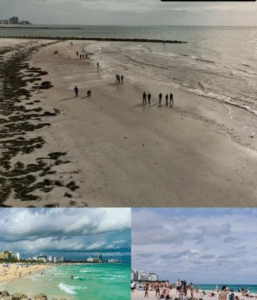A deadly waterborne threat has claimed the lives of four individuals, drawing urgent attention from health officials and prompting new warnings for people who live near or are visiting coastal areas. The culprit: a rare but dangerous flesh-eating bacteria known as Vibrio vulnificus. This potentially fatal microorganism is found in warm coastal waters and can infect people through open wounds or by consuming contaminated seafood, especially raw oysters.
The recent deaths occurred in different locations, but all were linked to exposure to brackish or saltwater environments where the bacteria thrive, particularly in the warmer summer months. Health authorities are now urging the public to exercise extreme caution, especially if they have any cuts, scrapes, or recent surgical wounds that might allow the bacteria to enter the body.
Vibrio vulnificus infections are relatively rare but can be deadly. Once the bacteria enter the bloodstream or soft tissue, they can cause necrotizing fasciitis—a severe condition that destroys flesh and muscle, often requiring emergency surgery, and in extreme cases, amputation. The fatality rate for invasive infections can be as high as 33%, especially among those with compromised immune systems, liver disease, or other chronic health issues.
Health officials have confirmed that the victims ranged in age from their 40s to 70s and had underlying health conditions that made them more vulnerable to severe infection. In one case, a man contracted the bacteria after swimming in coastal waters with a healing tattoo. Another fatal case involved an individual who ate raw shellfish at a beachside restaurant.
Symptoms of Vibrio vulnificus infection typically appear within 12 to 24 hours and may include fever, chills, vomiting, diarrhea, abdominal pain, and skin lesions near the infection site. Rapid deterioration is common, and patients often require hospitalization and aggressive treatment, including intravenous antibiotics and sometimes surgery.
In response to these incidents, local and state health departments are issuing advisories. People with open wounds, recent tattoos, or chronic illnesses are strongly encouraged to avoid exposure to warm seawater and to wear waterproof bandages if contact is unavoidable. Authorities are also advising against consuming raw or undercooked seafood, particularly oysters harvested from warm waters.
Experts note that climate change and rising sea surface temperatures may be contributing to the spread and intensity of such bacteria. Warmer oceans are creating ideal conditions for the bacteria to flourish, expanding their presence into previously unaffected regions. This means that individuals in areas once considered low-risk may now face similar threats.
While not everyone exposed to the bacteria becomes seriously ill, the risk remains significant for those with existing health problems. As a precaution, people are urged to seek immediate medical attention if they develop symptoms after exposure to coastal waters or consuming raw shellfish.
In the wake of these fatalities, communities are reassessing safety measures and increasing public education efforts. Warning signs, educational campaigns, and stricter seafood regulations may soon follow in regions where outbreaks have occurred. Medical professionals emphasize that while the number of infections remains relatively low, the potential consequences are severe enough to warrant widespread awareness and proactive prevention.
Ultimately, the message from experts is clear: respect the water, protect your health, and don’t ignore even minor wounds or symptoms when venturing into warm coastal environments. As temperatures rise and the bacteria continue to spread, staying informed and vigilant could be the key to avoiding a deadly encounter.


